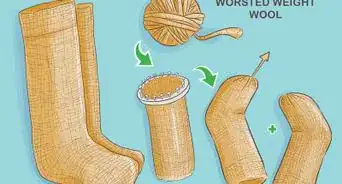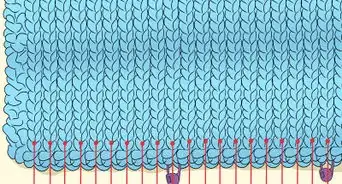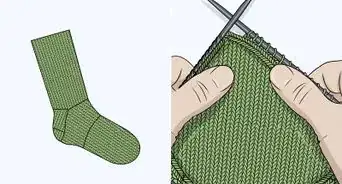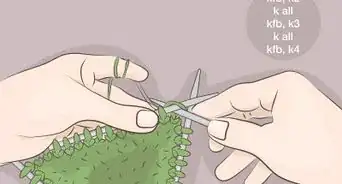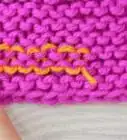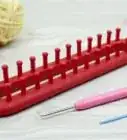wikiHow is a “wiki,” similar to Wikipedia, which means that many of our articles are co-written by multiple authors. To create this article, volunteer authors worked to edit and improve it over time.
The wikiHow Video Team also followed the article's instructions and verified that they work.
This article has been viewed 49,201 times.
Learn more...
Many knitting projects require more than one skein of yarn. As you reach the end of one skein and begin on the next, you have a few options for joining the two skeins together. You can tie the old and new yarns together loosely, going back later to weave the loose ends into the knitted fabric, but this leaves a noticeable bulge. You can also thread one strand of yarn through a needle and pierce it back and forth through the other strand several times. This also leaves a noticeable bulge. Splicing the skeins of yarn together, effectively joining them end-to-end into a single piece of yarn, gives an almost undetectable join with no tell-tale bulge. Splicing your yarn also eliminates the need to weave in an extra pair of yarn ends.
Steps
-
1Separate the strands ("plies") of yarn, using your fingernails or the point of a knitting needle.
- If you're working with a single-ply or "single" yarn, use the point of the knitting needle or your fingernails to fray the end of the strand, separating the fibers.
- Do this with both pieces of yarn you intend to splice together, then lay the separated strands end-to-end.
-
2Work up to about 3 inches (7.6 cm) from the end of each piece of yarn.Advertisement
-
3Overlap 1 of the strands from the left-side piece of yarn, and 1 of the strands from the right-side piece of yarn. Leave the other plies aside for now.
-
4Twist the overlapped strands together.
- If you're working with a single-ply yarn made of natural fibers that will felt, twist both frayed lengths together. If you're working with a single-ply yarn made of man-made fibers, you have the choice of twisting both frayed ends together or twisting just some of the fibers from each end together.
-
5Moisten both hands and work the twisted yarn strands vigorously back and forth between your fingers until they felt slightly.
- Natural fibers such as wool and angora will felt; most man-made yarns will not. But you should still work man-made fibers and forth to make sure they're tightly twisted together.
-
6Trim any remaining loose strands or frayed fibers--the ones you haven't yet twisted--to about half their length.
-
7Repeat the twisting process, working the next set of fibers into the spliced strand.
- If you're working with natural fibers, moisten your hands again to help felt the remaining loose fibers into the spliced strand.
- You also have the option of leaving the loose strands hanging. You can work them into the fabric as you knit past the splice, or use a yarn needle or crochet hook to thread the loose ends later--although having to thread loose ends into your work defeats the original purpose of splicing yarn together.
Things You'll Need
- Yarn
- Knitting needles
- Scissors
References
- Videos provided by Suzanne Bryan
- http://www.domiknitrix.com/howtos/spliceyarn.cfm


